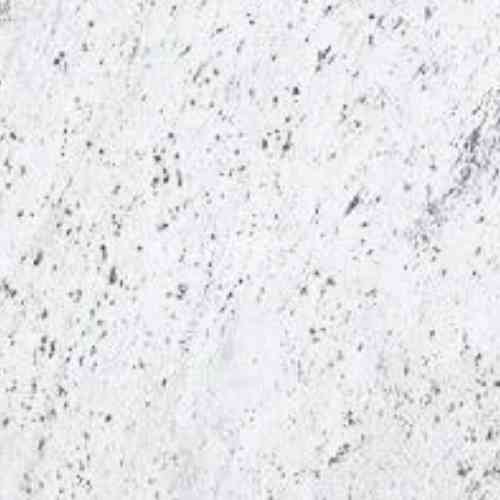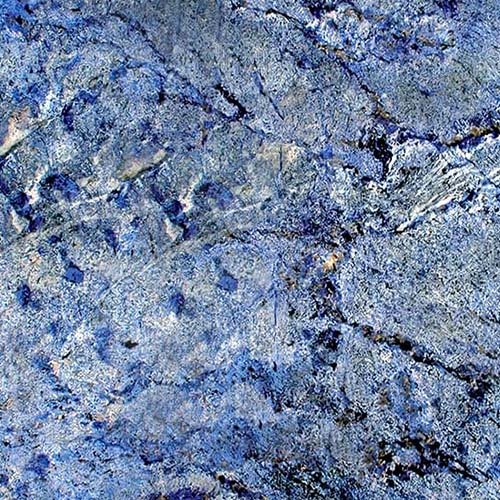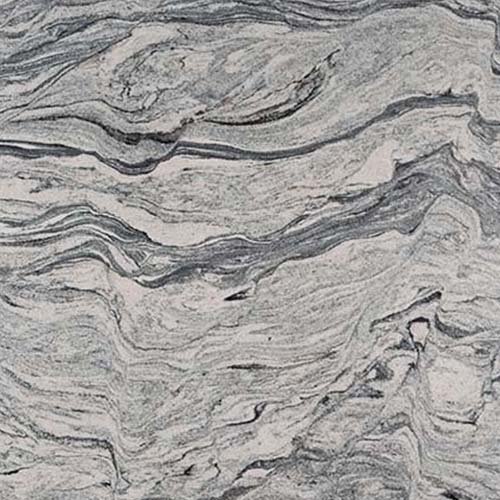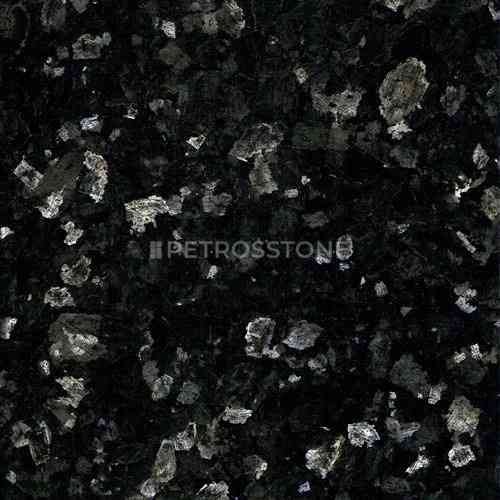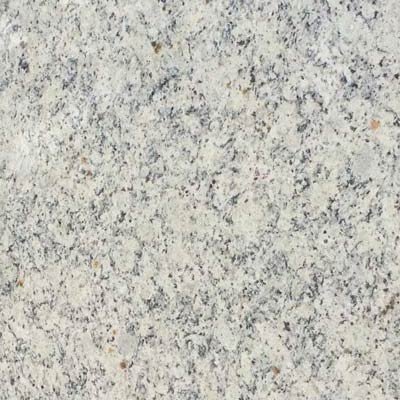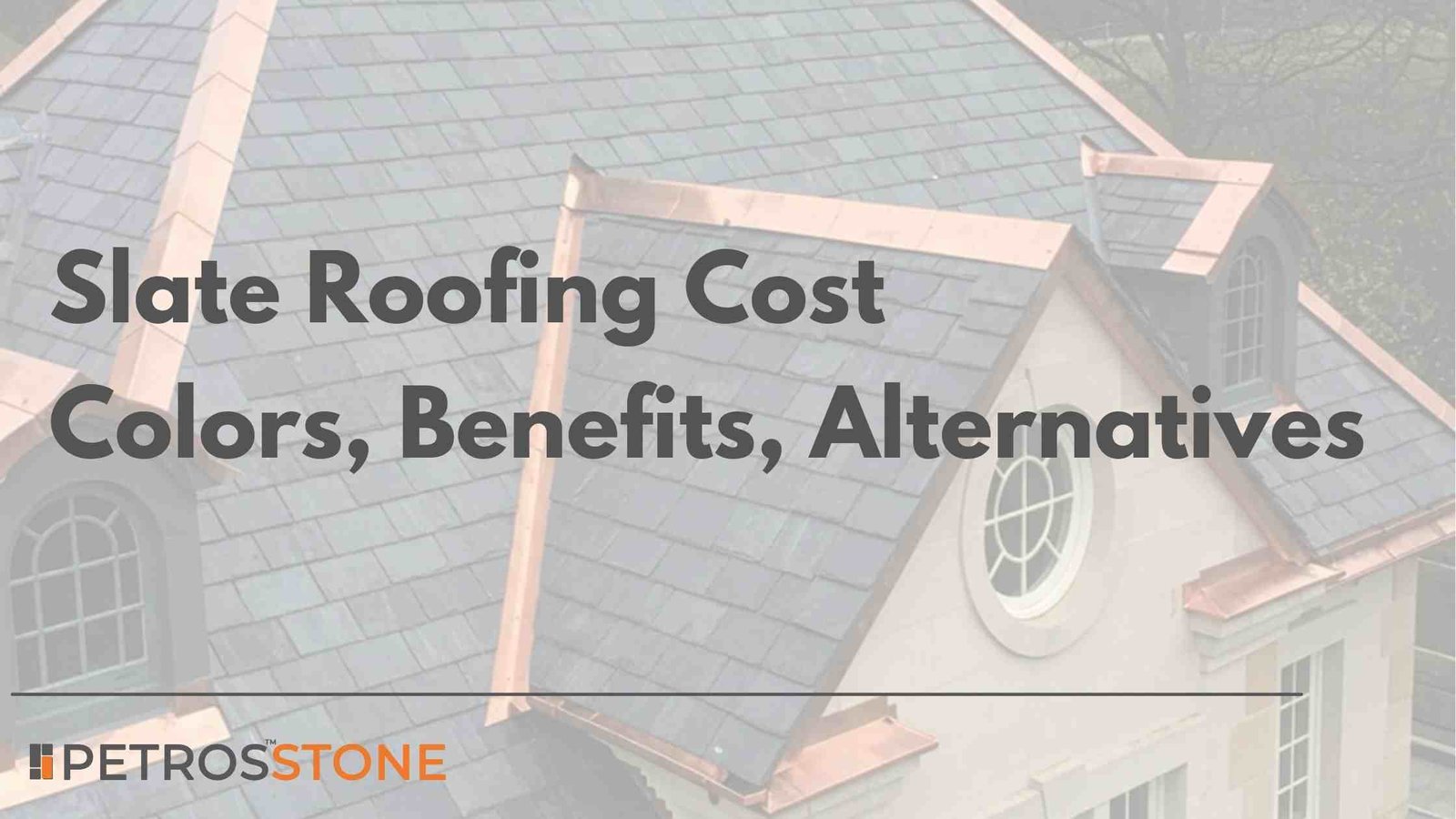
A strong combination of permanence, beauty, and rare variations makes natural slate an easy choice for both traditional and contemporary roofing designs. Colors range from classic grays, blacks, and silvers to more distinctive greens, copper, or multi-tone blends.
But with so many roofing materials in the market, understanding slate color options and their costs becomes essential. In this article, we cover 10 slate colors with prices and benefits, giving homeowners a clear insight to make informed choices. We also go over the cost of slate roofing.
A gray slate from one region will look different from a gray slate sourced elsewhere – every slate color and pattern is unique due to its geological formation over millions of years, and not just surface finishes. Timeless elegance here is a given because it can either hold a uniform tone or evolve into a rich patina with time. As a result, natural slate has become a benchmark for projects that demand both aesthetic sheen and functional reliability.
- 10 Types of Slate Colors with Prices
- 1. Blue-Gray (Vermont) Slate
- 2. Charcoal Gray / Graphite Black
- 3. Deep Black Slate
- 4. Silver-Blue Slate
- 5. Forest Green Slate
- 6. Rust-Red / Ochre-Brown Slate
- 7. Copper Slate (Brown-Gold with Metallic Sheen)
- 8. Mottled Green-Purple Slate
- 9. Purple Family Slate (Plum, Vermont Purple, Brazilian Purple)
- 10. Multi-Stone Slate
- Installation Costs
- Alternate Roofing Options – Price Range and Comparisons
- Is Slate Right for You?
- Summary
- Key Takeaways
10 Types of Slate Colors with Prices
1. Blue-Gray (Vermont) Slate
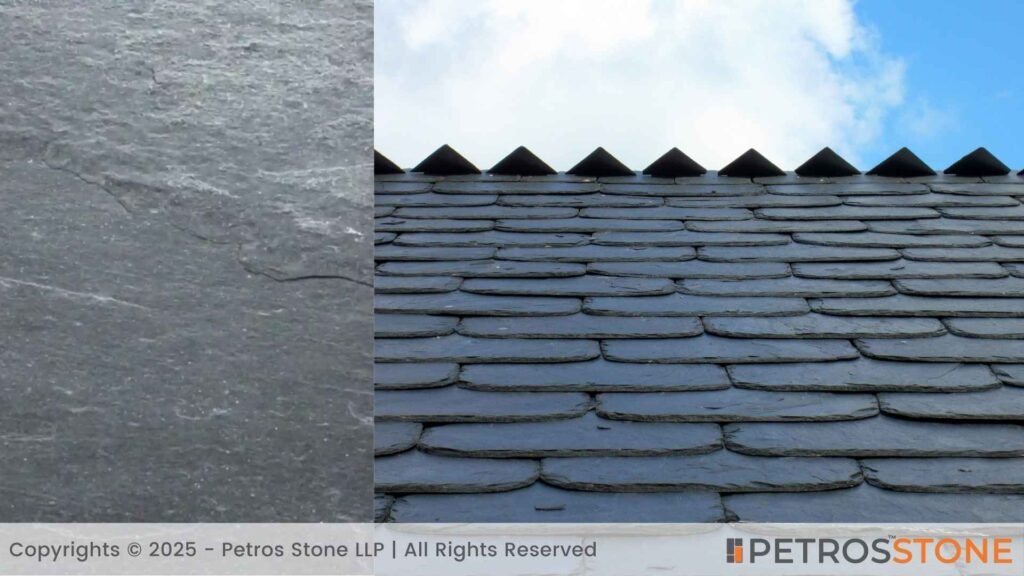
Blue-gray Vermont slate is widely regarded as one of the best choices for high-end roofing. Its unfading deep blue is a result of an exceptionally stable mineral structure inside. Its slight sheen reflects light uniquely even after decades.
| Slate Color / Type | Material Cost (USD / Sq. Ft.) |
| Blue-Gray Vermont | $0.69 – $0.93 |
Design Suitability
- It is quarried originally in Vermont, and is widely used for restoration and new architectural builds.
- Suits buildings that call for historical authenticity. Best for colonial, Georgian, federal-style residences. The blue-gray vermont also suits modern farmhouses and estates that seek a blend of classic and contemporary styles.
- Preferred for luxury projects where understated sophistication is highly valued.
- Brings a cool and grounded feel to the properties. Matches best with sharp white trim, natural stone facades or minimalist accents. The blue-gray vermont goes well with copper gutters and glass as well for a more contemporary edge.
- Most popular in coastal and mountainous areas. This natural slate resists UV degradation, retains color and maintains it through environmental shifts.
Pros
- Unfading color stability compared to paint or synthetic shingles.
- Exceptional durability of 75 – 150 years, with only minimal change in appearance.
- Rarely calls for repair except on mechanical impact. Also sheds debris, resists algae.
Cons
- The blue-gray Vermont slate is among the most expensive roofing materials.
- Unless the slate design is placed in harmony with its surroundings, its cool, industrial look can appear stark or cold against some warm-toned exteriors.
- The blue-gray vermont slate sometimes calls for framing upgrades. Without precise installation, long-term benefits can quickly dwindle.
Key Takeaways
- The Vermont blue-gray slate is best suited for historical-type designs, and maintenance-free living.
- Upfront costs are high, but operational and repair costs are among the lowest.
- Experienced slate roofers are needed for installation to fully realize its potential value.
- The cool blue-gray sheen pairs exceptionally with white, black, copper, and light modern accents.
2. Charcoal Gray / Graphite Black
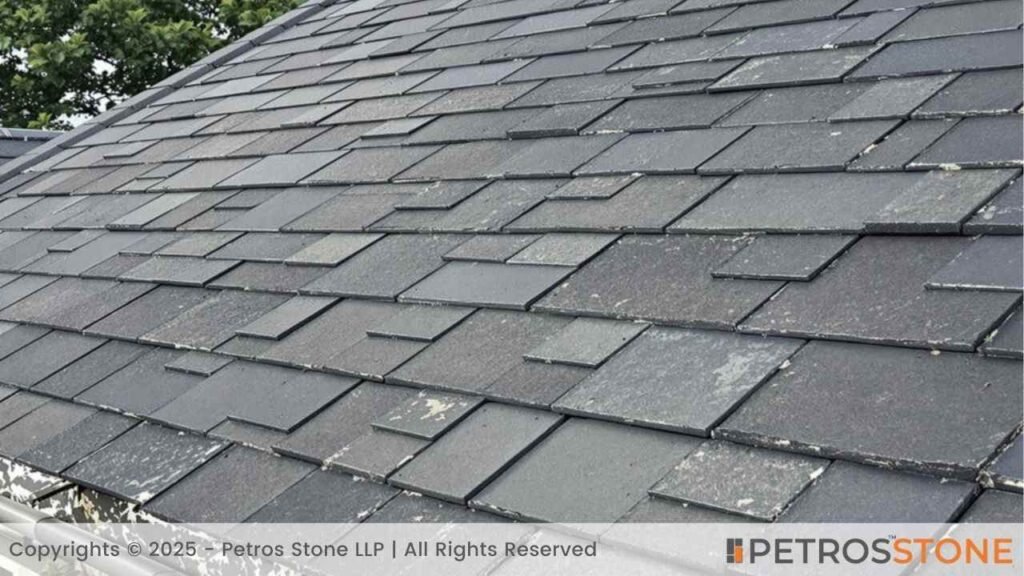
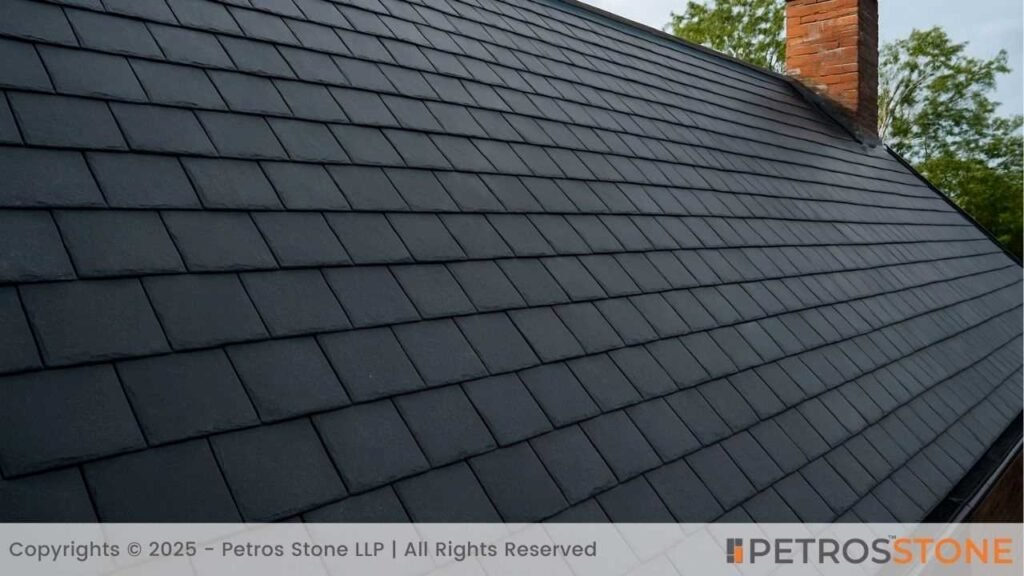
This natural slate has a deep shade with uniform tones that range from dark gray to almost full-black. It has a subtle, understated look, which makes it one of the best choices for contemporary and traditional designs.
| Slate Color / Type | Material Cost (USD / Sq. Ft.) |
| Charcoal Gray/Graphite Slate | $0.87 – $1.27 |
Design Suitability
- The graphite black is best suited for urban homes, modern remodels and luxury estates.
- It brings a clean, minimalist aesthetic with a bold presence.
- This color pattern blends beautifully with glass, steel and neutral exteriors.
- Since darker tones absorb heat, they work well in cold, snowy climates.
Pros
- This color complements nearly all home styles.
- Chances of fading are very low, due to high mineral stability.
- Has a premium resale value appeal, and works well with both contemporary and traditional facades.
Cons
- Such dark tones are ill-suited for hot climates.
- Uniform tones may feel less unique when compared to multi-toned slates.
- Prices vary based on the quarry source and scope of availability.
Key Takeaways
- Ideal for homeowners who wish for sleek, modern roofs.
- Low maintenance and long-lasting color stability.
- Best suited for cooler or temperate regions.
3. Deep Black Slate
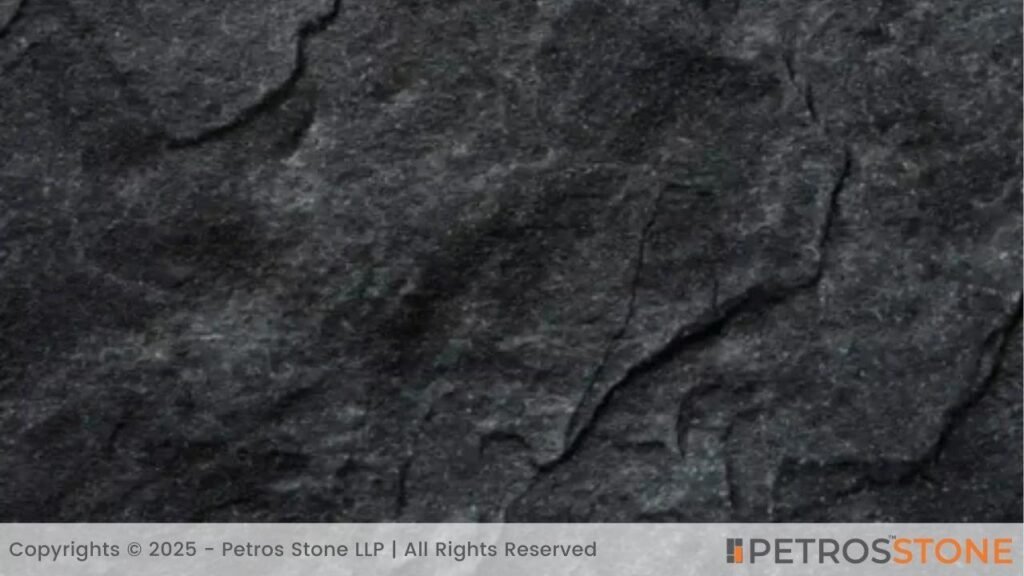
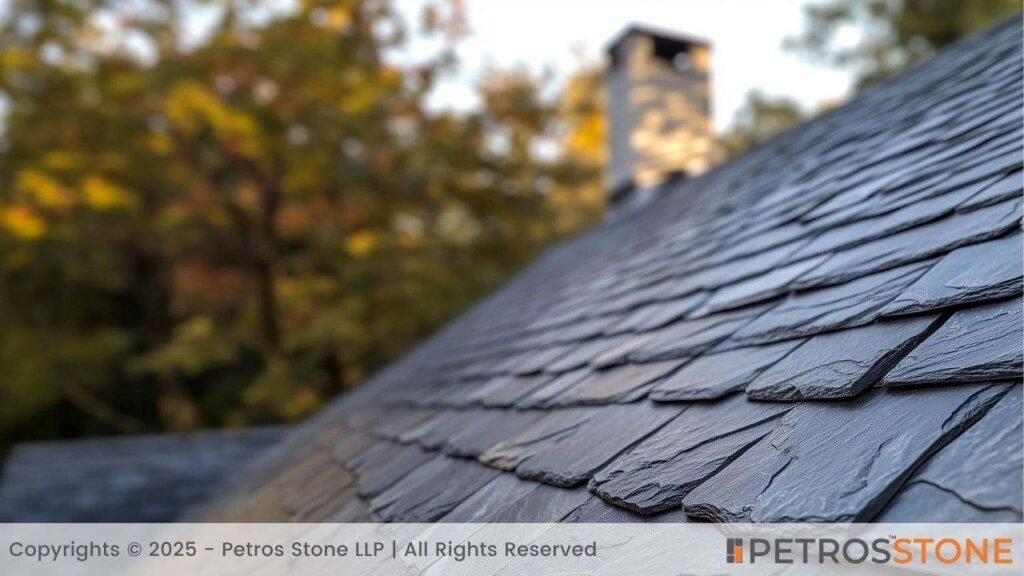
The deep black slate delivers a bold, consistent jet-black finish across the roof surfaces. The non-reflective matte helps it to absorb light, and creates great visual contrast.
| Slate Color / Type | Material Cost (USD / Sq. Ft.) |
| Deep Black Slate | $1.04 – $1.62 |
Design Suitability
- For urban dwellers, who look to deliver minimalist or modern statements. The deep black slate offers depth and interesting contrast.
- The jet-back finish lends a bold, luxury-driven tone that elevates rooflines.
- Best paired with options like red brick, light stone, glass, or metals.
- In areas with fluctuating UV intensity, this one holds color without fading.
Pros
- The deep black slate has great stain resistance as its dark color is effective at masking environmental stains and rooftop debris.
- Brings detailed visual separation as it enhances curb appeal and spotlights surrounding the property.
- Rarely fades, and maintains uniformity in tone for decades.
- The dark surface encourages quick melting – resistant to snow.
Cons
- As opposed to snow melting, its dark surface also means greater heat absorption. Attic temperatures can soar in the summer.
- Cost is higher compared to most non-slate roofs.
- Without thoughtful application, it may not suit small or dimly-lit homes.
- This natural slate calls for a reinforced roofing substructure and professional fitting.
Key Takeaways
- Ideal for projects that seek to create bold visual statements.
- A great option for snowy regions.
- Choose professional installers due to its weight conditions.
- Great performance in the long run with minimal maintenance, making it a top choice for both urban and suburban high-value homes.
4. Silver-Blue Slate
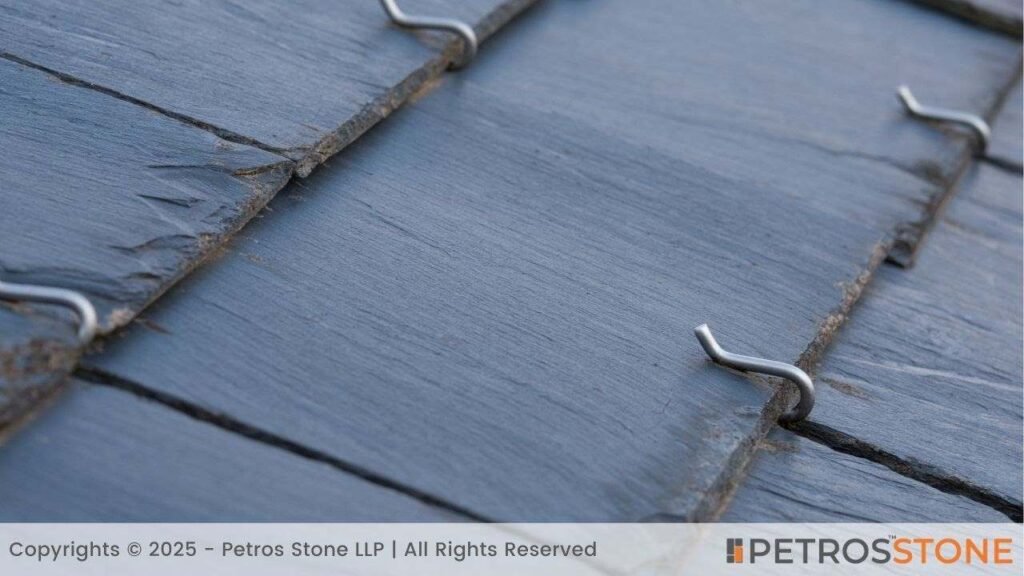
The silver-blue slate has gentle silver undertones that merge beautifully with cool blue hues. It has a polished, luminous appearance that feels like a breeze.
| Slate Color / Type | Material Cost (USD / Sq. Ft.) |
| Silver-Blue Slate | $0.69 – $.1.04 |
Design Suitability
- Best suited for coastal homes, contemporary builds, and steel-and-glass structures.
- This natural slate ushers an airy tone that’s sleek and elegant, with a tinge of modern luxury.
- Can complement metallic finishes or large glass panels. The color is an excellent match for water-side homes or open architectural styles.
- A great fit for humid, coastal climates.
Pros
- The silver-blue slate has a luminous glow that lends it a high-end appearance.
- The lighter tones are beneficial for heat absorption, thereby resisting weathering. Also, it is UV-stable, so brightness is retained for decades.
- This is one of those niche slates applied by architects and homeowners who have a strong penchant for luxury, design and art.
Cons
- Not the greatest choice for rustic, traditional homes as it could create a non-chalant feel.
- Highly expensive due to quarry-based availability.
- Stains show easily in polluted or dusty regions.
Key Takeaways
- Great choice for modern or coastal homes.
- Light tones are helpful to keep the interiors cool.
- Ill-suited for rustic settings.
5. Forest Green Slate

The natural shades from soft moss to deep forest tones create a grounded, organic look. And when these slates weather into warmer tones, it creates a mystic charm.
| Slate Color / Type | Material Cost (USD / Sq. Ft.) |
| Forest Green Slate | $0.81 – $1.16 |
Design Suitability
- The natural color supports countryside cottages, suburban villages and eco-inspired homes.
- Harmony is the tone, creating an earthy welcoming aesthetic.
- Pairs organically with wooden sidings, stone facades and landscaped gardens. Majestic with cream or beige finishes.
Pros
- Inspired from nature, with a timeless, tranquil appeal.
- Ages beautifully into earthy browns.
Cons
- Not so ideal for ultra-modern or industrial styles.
- The way it weathers to a brown shade may not equally appeal to all homeowners.
- Weathering can create unexpected color shifts.
- Has higher costs compared to gray or black slates.
Key Takeaways
- Perfect for homeowners who prefer nature-inspired designs.
- Not advisable for minimalist or modern homes.
6. Rust-Red / Ochre-Brown Slate
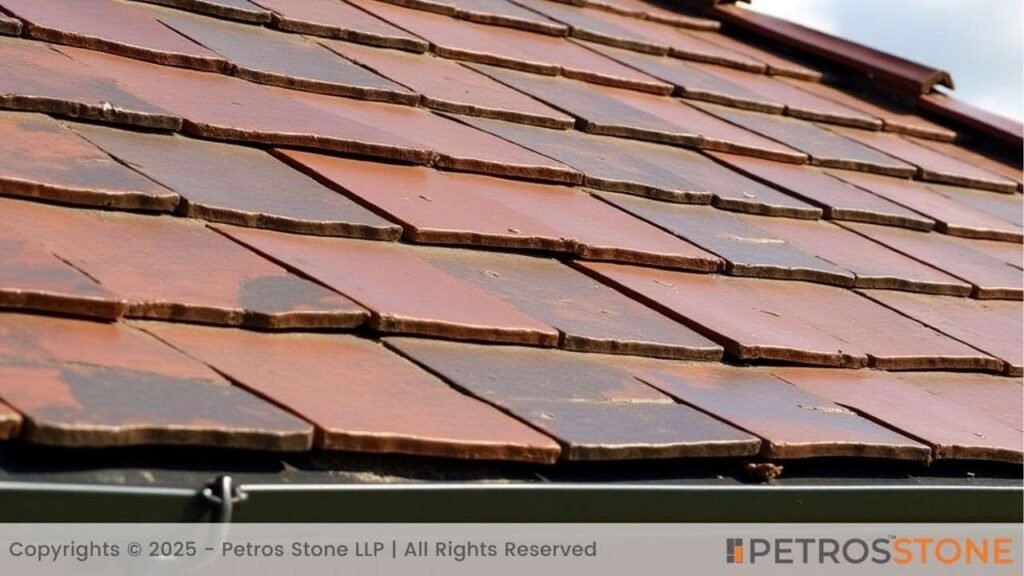
The earthy reds, ochre-brown, and coppery tones bring a rustic vibrancy to the roofing. With mineral veining, these slates lend a handcrafted look to the roofing structure.
| Slate Color / Type | Material Cost (USD / Sq. Ft.) |
| Rust-Red / Ochre Brown | $0.69 – $1.39 |
Design Suitability
- An easily adaptable roofing style for farmhouses, ranch-type builds, and countryside retreats or cottages.
- The warm, rustic charm creates a grounded, earthy appeal.
- Effortlessly blends in with brick facades, wood siding, or stone walls. Terracotta accents and natural landscaping instantly elevate its effect.
- In drier regions, the earthy tones can blend well with the roughness of the surroundings, whereas in wet climates, the tones may deepen with age.
Pros
- Lends rare colors for warm, distinctive aesthetics.
Cons
- Availability is limited.
- Pricing is in premium ranges due to demand and rarity.
Key Takeaways
- Ideal for rustic, traditional, or countryside homes.
- Rare and premium in nature.
- Develops richer, deeper tones with time.
7. Copper Slate (Brown-Gold with Metallic Sheen)
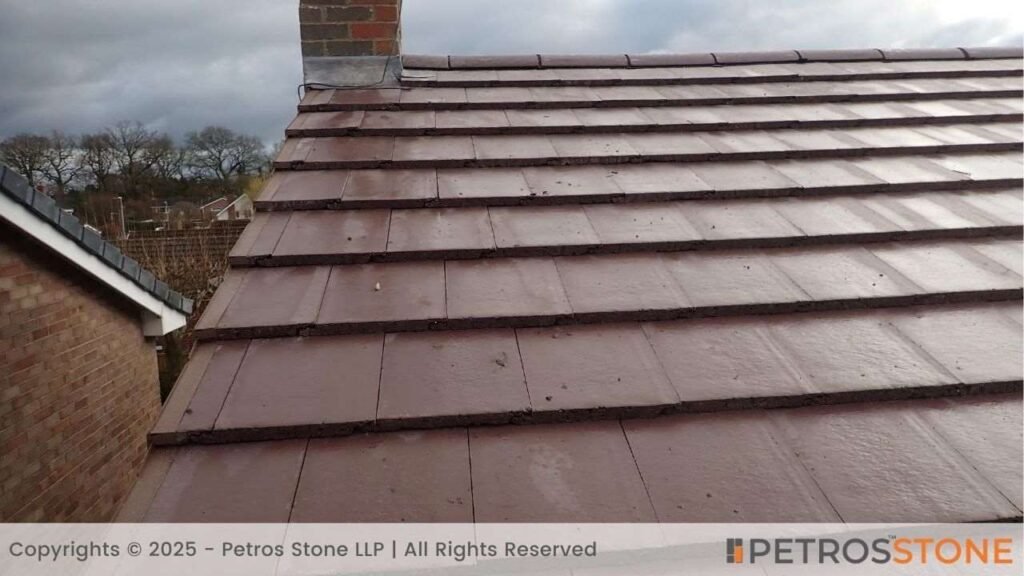
The copper slates have a warm brown base and splashes of golden and metallic shimmer that weathers beautifully with time into subtle, patina-like variations.
| Slate Color / Type | Material Cost (USD / Sq. Ft.) |
| Copper Slate | $0.9 – $1.20 |
Design Suitability
- Standout accents for heritage-style homes, rustic retreats, and luxury remodels.
- Brings a subtle but sure air of opulence to the table.
- Weathering only adds character.
- Mixes well with terracotta finishes, or natural stone walls.
Pros
- The metallic accents build a rich character.
- A great choice for long-term visions.
- Unlike most natural slate options for roofing, this one’s versatile. Goes well with earthy traditional settings and modern exteriors.
Cons
- Supply depends on quarry source.
- Premium cost compared to standard grays or greens.
- The metallic tones have a diverse effect and require a keen eye for selection.
Key Takeaways
- Natural warmth with a metallic tinge.
- Grounded opulence that is true to its durability.
8. Mottled Green-Purple Slate
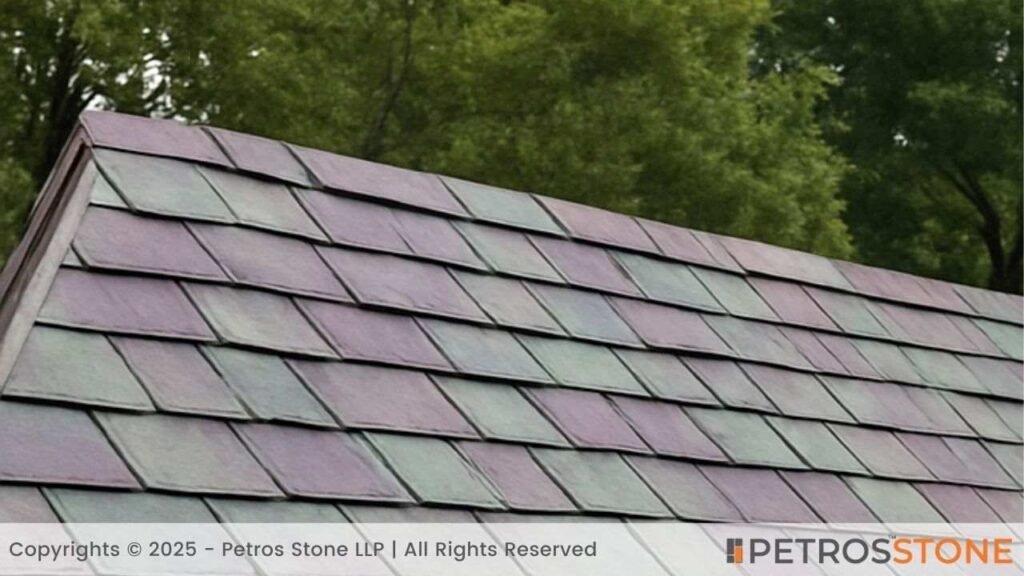
This multi-hued slate, prized for its vintage aesthetics, features an artistic mix of green, purple, and gray tones.
| Slate Color / Type | Material Cost (USD / Sq. Ft.) |
| Mottled Green-Purple | $0.98 – $1.45 |
Design Suitability
- Ideal for heritage restorations that seek faithful replication of their original roofing.
- Because of its character and texture, it blends well with traditional styles.
- Chosen by experts for bigger roofs, where pattern variations can create engaging roofscapes.
- Works beautifully with classic facades, copper detailing, and hand-crafted masonry.
- The mottled green-purpled slates have a strong history of enduring harsh weather conditions with minimal color change or material degradation.
Pros
- Performs exceptionally well in extreme climates, including heavy snow and moisture.
- Its naturally variegated texture camouflages minor roof wear.
Cons
- Very limited supply because it is sourced from small quarries with restricted output.
- Higher cost compared to single-color slates.
- Hard to find a matching replacement with time.
Key Takeaways
- Best for signature homes where heritage-look is the key.
- Extreme weather resilience.
9. Purple Family Slate (Plum, Vermont Purple, Brazilian Purple)
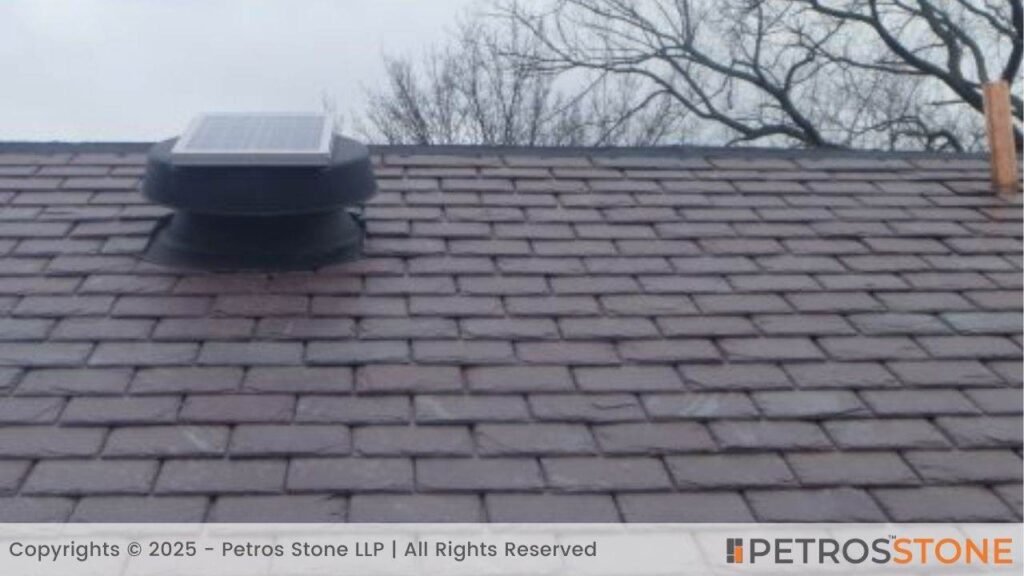
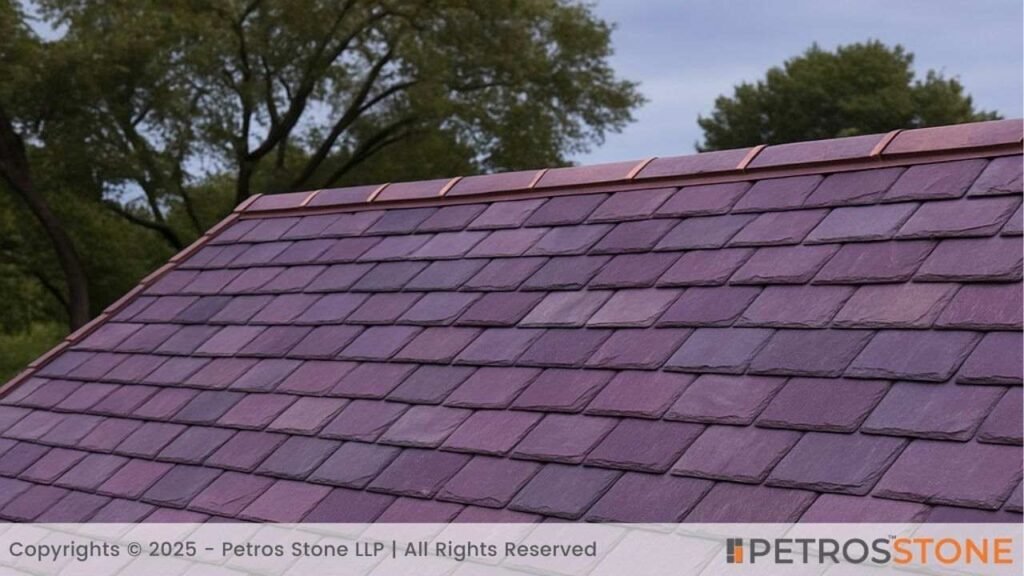
We are talking about soft lavender undertones, deep plum or even hints of burgundy. These are rare slate colors, chosen for distinct statements.
| Slate Color / Type | Material Cost (USD / Sq. Ft.) |
| Vermont Purple | $0.7 – $1.2 |
| Brazilian Purple | $0.69 – $1.39 |
| Plum (Heritage Grade) | $0.98 – $1.45 |
Design Suitability
- Best for heritage homes, upscale estates. A great choice for custom builds or heritage-inspired architecture.
- Has an artistic tone with a unique touch of sophistication. Pairs well with lighter stone façades, beige stucco, or natural wood trim.
- Suited for cold and moderate climates.
Pros
- Luxury meets rarity, with high visual impact.
- Excellent durability and longer lifespan.
- The kind of distinctive tone that sets a property apart.
Cons
- Not as commonly available as grays or blacks.
- Deep shades fade faster in hot, sunny regions.
- Runs the risk of looking too bold for minimal or modern homes, if not balanced with the right design elements.
Key Takeaways
- Best suited for projects like heritage restorations.
- A designer’s choice rather than a mainstream option.
10. Multi-Stone Slate
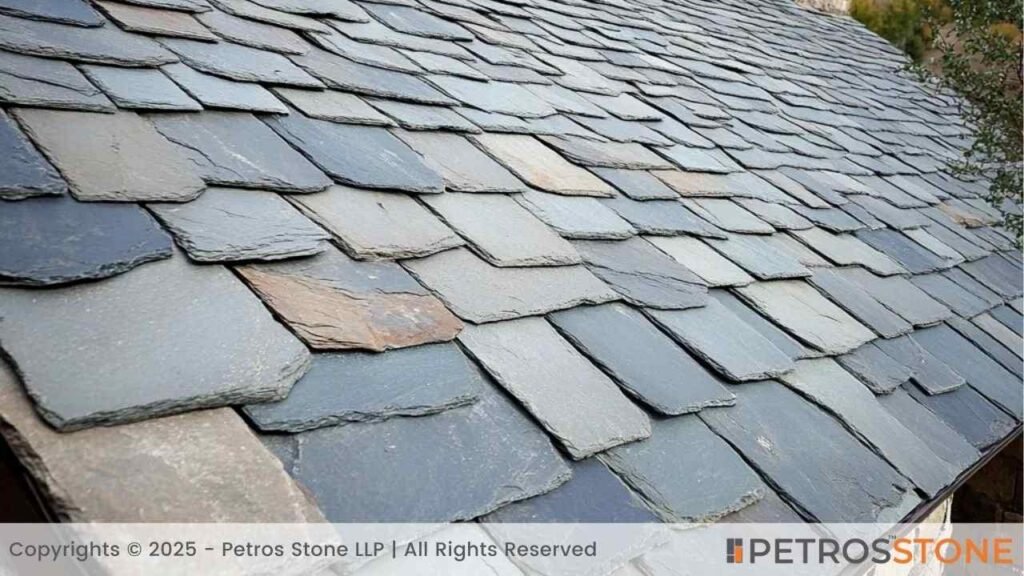
The multi-tone slate has diverse shades like grays, greens, purples, and coppers. Now, imagine this combination on a single roof creating a dynamic look.
| Slate Color / Type | Material Cost (USD / Sq. Ft.) |
| Multi-Stone Slate | $1.04 – $1.62 |
Design Suitability
- For craftsman-style homes, artistic projects, and custom designs.
- Adds creativity, and a bespoke character.
- This works beautifully with natural wood and stone facades, or even mixed-material exteriors.
Pros
- No two roofs can ever be the same.
- Brings a very different, dynamic identity and flair.
- The finish is character-rich.
Cons
- Not a good choice for uniform design schemes.
- Because of its natural variety, it is hard to find a good match in case of repair or replacement.
- Slightly more expensive due to selection and sorting.
Key Takeaways
- Best suited for creative, design-driven projects.
- One-of-a-kind look.
- Not advisable for uniform, minimalist tones.
Installation Costs
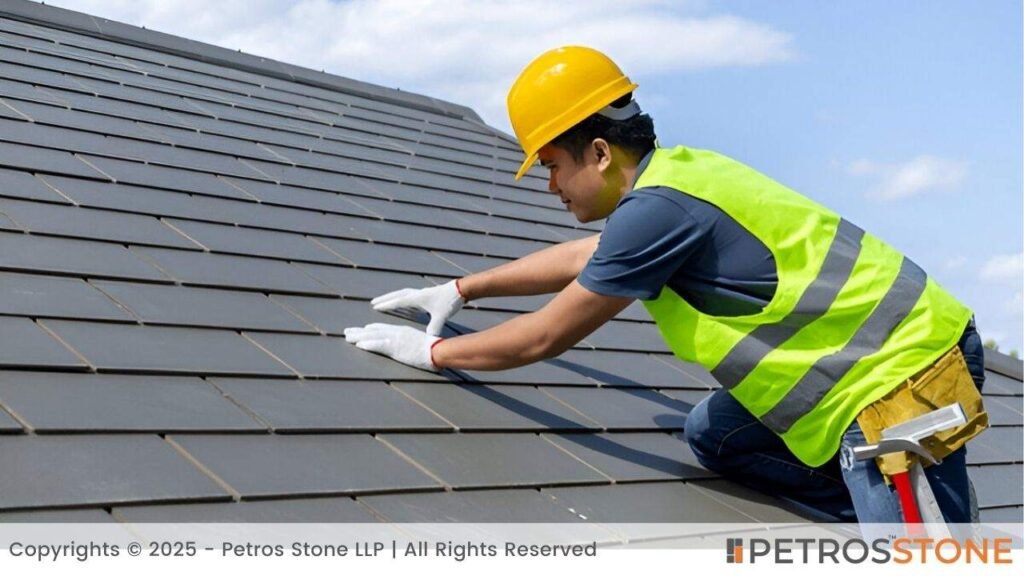
Colors and material costs are only part of the total expense. Installation costs represent a significant investment, because slate roofing is a highly specialized, labor-intensive task, driven by a lot of technical and practical factors that impact the overall cost of the project.
Factors Affecting Installation
- Slate Size and Thickness: Larger slates demand more structural support, while smaller ones need more pieces and fastening, calling for more labor intensity that is proportional to costing.
- Roof Complexity: Roofs with multiple facets, steep pitches, dormers, and intricate details call for more labor for precise cutting, fitting and sealing.
- Underlayment and Decking: Old roofs may need reinforcement. Because slate is heavy in weight. This necessitates roof-framing or decking. In high-rain or snowing zones, double layers of underlayment is a must.
- Installation Method: There is a huge difference in traditional nail-fastened methods and mechanically fixed or ventilated rainscreen systems. These methods differ in complexity. Such advanced methods cost more, but offer great longevity.
- Labor Expertise: Finding qualified slate roofers is almost half the job well-done. Such labor demands premium rates, especially in areas where there is a scarcity of execution expertise. But it is worth the effort, for long-term performance.
- Geography and Access: Remote locations, difficulty in access, and weather conditions can hamper the ease of installation, demanding higher costs – some hurricane-prone zones need extra fasteners and insulation. Urban homes with tight scaffolding also pushes labor costs up.
- Waste and Breakage: In most cases, 5-15% of the slate volume is wasted during cutting and fitting. Using premium slates spiral up the replacement or repair costs.
- Permissions and Building Codes: Local or state regulations / requirements can add additional costs on compliance, certifications or inspections.
- Existing Roof Removal: Stripping old materials, and dismantling conflicting structures or impediments add to labor and waste-handling fees.
- Add-Ons: Underlayment and decking ensures water-proofing, but for reasons like redirecting water off the roof and preventing sliding snow in colder regions, elements like metal flashing, custom valleys or snow-guards are important, and add to the overall cost.
Installation Costs Table
| Slate Color / Type | Installation Cost (USD / Sq. Ft.) | Material Cost (USD / Sq. Ft.) | Total Estimated Cost (USD / Sq. Ft.) |
|---|---|---|---|
| Blue-Gray (Vermont) | $8.43 – $18.07 | $0.69 – $0.93 | $9.12 – $19.00 |
| Deep Black | $8.43 – $18.07 | $1.04 – $1.62 | $9.47 – $19.69 |
| Green | $8.43 – $18.07 | $0.81 – $1.16 | $9.24 – $19.23 |
| Purple | $8.43 – $18.07 | $0.70 – $1.45 | $9.13 – $19.52 |
| Mottled Green-Purple | $8.43 – $18.07 | $0.98 – $1.45 | $9.41 – $19.52 |
| Red | $8.43 – $18.07 | $0.69 – $1.39 | $9.12 – $19.46 |
| Charcoal | $8.43 – $18.07 | $0.87 – $1.27 | $9.30 – $19.34 |
| Brown | $8.43 – $18.07 | $0.81 – $1.16 | $9.24 – $19.23 |
| Gold | $8.43 – $18.07 | $0.90 – $1.20 | $9.33 – $19.27 |
| Multi-Colored Blend | $8.43 – $18.07 | $1.04 – $1.62 | $9.47 – $19.69 |
*Note: The table above reflects tentative installation and material costs.
Step-by-Step Guide to Calculate Roof Cost
| Step | Description | Contingencies / Notes |
| 1. Measure Roof Area | Find the total roof area in sq. ft. (length × width of each section). | Count overhangs + Tricky roof shapes need careful measuring. |
| 2. Adjust for Roof Pitch (Roof’s steepness or slope angle) | Use pitch factor (example: 1.12 means gentle slope and 1.5 means steep slope). | Steeper roofs mean more labor, and require more safety steps. |
| 3. Determine Material Cost | Multiply adjusted area by slate price per sq. ft. | Slate cost changes by color and rarity. |
| 4. Calculate Installation Cost | Multiply adjusted area by labor rate per sq. ft. | Labor costs vary by region – complex roofs add more. Check with local vendors to arrive at practical numbers. |
| 5. Add Structural Reinforcement | Add cost if the roof needs strengthening for heavy slate. | Check older homes for structural limits. |
| 6. Include Old Roof Removal | Add removal and disposal cost of old roofing. Additionally, dismantling of hindering / old structures can cost more. | Around $2 – $5/sq. ft., depending on material and disposal. |
| 7. Account for Permits | Include permit and inspection fees. | Local codes or historic zones may increase cost or time for project completion. |
| 8. Calculate Contingency Buffer | Keep 10 – 15% extra for unexpected issues. | Covers delays or hidden damage like bad decking. |
Alternate Roofing Options – Price Range and Comparisons

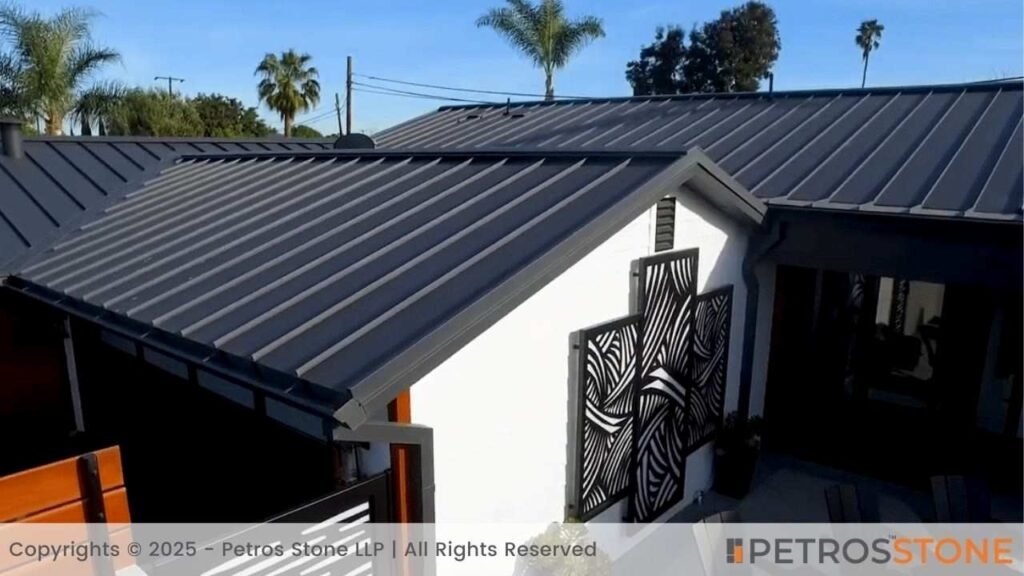

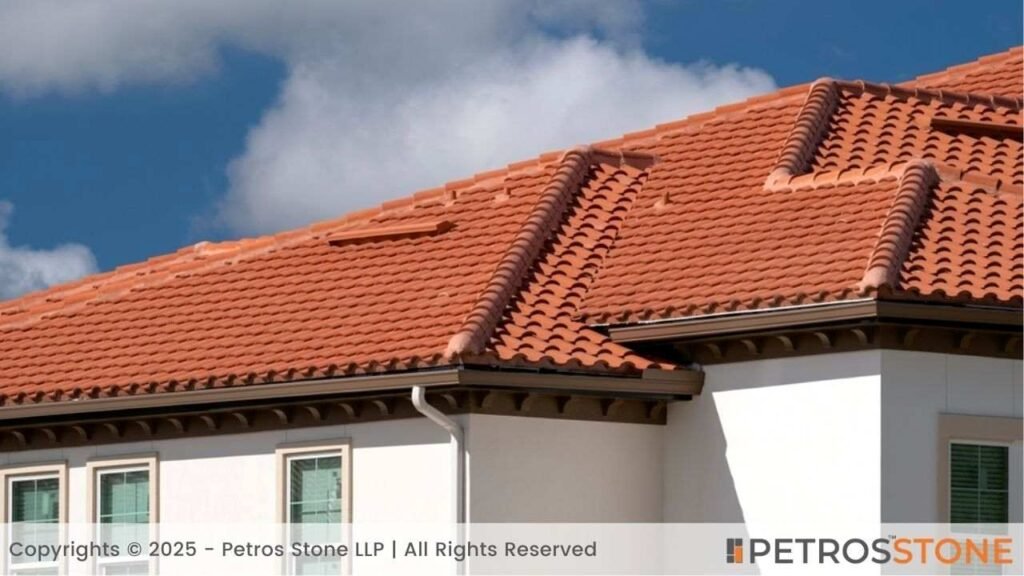
| Roofing Material | Average Installed Cost ($/ Sq. Ft.) | Durability (Years) | Benefits | Where Slate is Better |
| Asphalt Shingles | $3 – $6 | 15 – 30 Yrs | Affordable and easy to install | Slate has a better lifespan. |
| Metal Roofing (Steel, Aluminum) | $7 – $14 | 40 – 70 Yrs | Lightweight, fire resistant | Slate offers superior natural beauty and high-end finish |
| Wood Shingles/Shakes | $6 – $12 | 20 – 40 Yrs | Natural looking, eco-friendly | Better fire resistance and lower maintenance. |
| Clay or Concrete Tiles | $10 – $18 | 50 – 100 Yrs | Durable, good for warm climates | Unmatched color stability and natural aesthetic variety. |
| Synthetic Slate | $8 – $15 | 20 – 50 Yrs | Lighter, mimics natural slate | Better at authenticity and lifespan |
Pros and Cons of Slate Roofs
| Pros | Cons |
| Longer lifespan of 75 – 150 years | High upfront cost |
| Unparalleled in natural appearance | Requires strong support due to heavy weight |
| Fire, rot and insect resistant | Calls for skilled installation from experts |
| Eco-friendly, recyclable | Repairs can be expensive |
| Resistant to harsh weather conditions | Limited availability (not all sizes) |
| Boosts real estate value | Ill-suited for weak roof structures |
| Low maintenance | Slates are fragile, prone to cracking under impact |
| Great UV resistance, fades less | Longer installation time |
Is Slate Right for You?
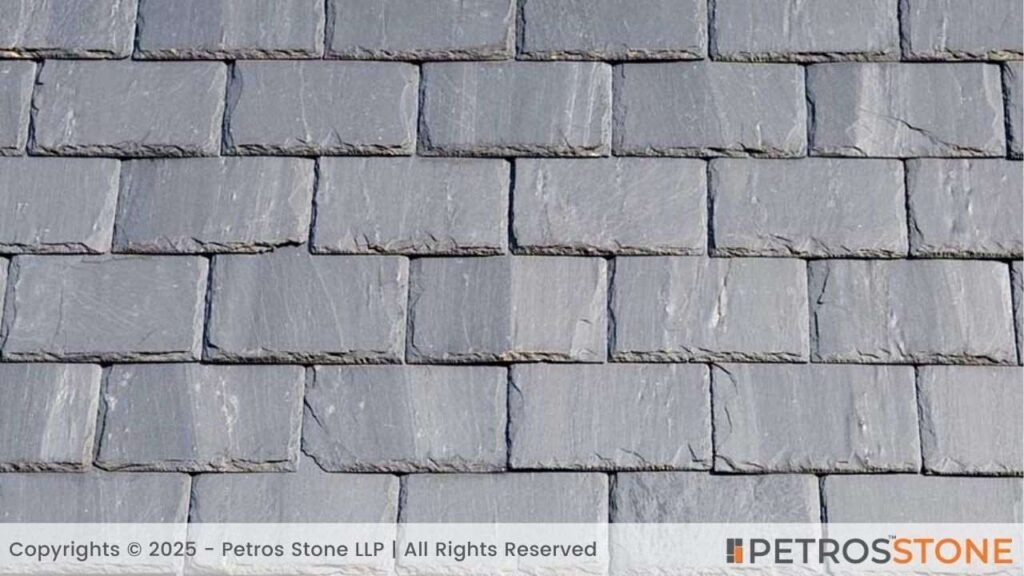
Slate roofs are known for their nature-born beauty, and the ability to last over a century. They are tough, offering strong resistance to fire, UV damage, and harsh weather conditions. And their range of colors enable them to be suitable for both classic and modern homes.
But slate comes with a high upfront cost and requires skilled installation and labor. Its weight calls for structural reinforcement, and while extremely durable, individual tiles can crack unexpectedly and be tricky to replace or repair.
Slate is surely a smart investment for homeowners who prize curb appeal, longevity, and low maintenance. If budget allows, it is a choice of great value dressed in nature’s wisdom.
Summary
Slate roofing combines timeless beauty with exceptional durability, offering a natural, high-end finish that can last over a century. Available in a wide range of colors—from deep blacks and purples to silvery blues and earthy reds—each slate type brings unique visual appeal and regional character. While upfront material and installation costs are high, slate roofs require minimal maintenance, resist extreme weather, and significantly boost home value. However, they demand expert installation and structural reinforcement due to their weight. For homeowners seeking long-term performance and distinctive style, slate is a premium yet worthwhile investment.
Key Takeaways
- Slate roofs last 75–150 years and outperform most roofing materials in terms of longevity and weather resistance.
- Color choices are vast and naturally formed, ranging from classic greys to artistic multi-tones—each with unique cost and design fit.
- Installation is costly and labor-intensive, often requiring roof reinforcement and highly skilled professionals.
- Ideal for luxury or heritage homes, especially in temperate and cold climates where slate thrives.
- Slate boosts curb appeal and resale value, making it a smart long-term choice for those with a sufficient budget.
Feel free to get in touch for a free consultation, quote, and get a detailed understanding from our experts here at Petros®. Visit https://petrosstone.com/ or call +91-8446360361 and WhatsApp

Hi, I’m Hemanth, a storyteller at heart with a background in journalism, screenwriting, and brand writing. At Petros Stone, I explore the stories behind materials and transform technical details into content that’s clear, creative, and easy to act on.
Brown Granite
White Galaxy Granite
Blue Bahia Granite
Silver Cloud Granite
Black Pearl Granite
Dallas White Granite


